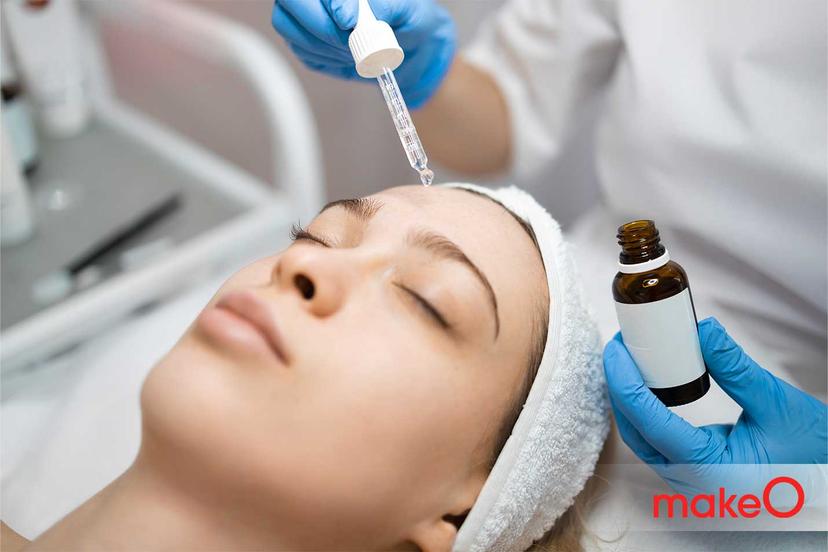MakeO blog
As mangoes begin to vanish and raindrops knock on your window more often, you know it’s time for monsoon. While the cold winds and cloudy days make us feel cosy, happy and alive, our skin might feel differently. The monsoon in India is also known to be the season flitted with diseases and infections of the skin. How do you deal with them correctly? What are the skin problems in monsoon to look out for? Read on to find out!
7 Common Skin Problems in the Monsoon and How to prevent them
Monsoon is a dry and humid time in the country which means that our skin can feel extra oily and dull on many rainy days. During this season, it is not uncommon to see several cases of fungal infections, acne flare-ups, rashes and more making an appearance on the skin. Here are 7 common skin problems you may face this monsoon season and how you can prevent them.
1. Acne
Red, flesh-like pimples, whiteheads and blackheads that irritate your skin, and cause bumps and an uneven texture are the most common skin problems in monsoon. Due to the humidity levels and the dryness, our skin can work extra hard to produce oil and this can clog pores and result in acne and inflammation.
The best way to prevent acne in the monsoon is by washing your face 2 times a day, using wipes and clean cloths to keep your face oil-free, maintaining a simple and effective skincare routine and using only non-comedogenic and light skincare products.
2. Eczema
Eczema is a serious skin condition that is exacerbated by the monsoon weather. In this chronic condition, the skin turns itchy and evidently red due to inflammation. Typically Eczema can cause rashes behind the knees, hands and feet and scratching these areas, even more, can result in swelling and redness.
Well, how do you avoid such skin diseases in the rainy season? You can prevent Eczema by taking showers in warm, not hot water, moisturising religiously, staying hydrated and wearing loose and breathable fabrics during this season.
3. Excessive sweating
With the change in humidity levels and the amount of dryness in the air in the rainy season, many people face the issue of excessive sweating. Of course, the easiest way to prevent this is by being in well-ventilated rooms and wearing airy cotton clothes that are loose instead of synthetic and tight ones. And, like other skin problems in the rainy season, washing regularly and maintaining your hygiene can also greatly help this skin issue.
4. Dry skin
Dry skin is one of the main concerns several people deal with in this cloudy rainy weather. This can be easily tackled by avoiding extremely hot showers, using body oils or body butter, choosing nourishing body washes over stripped shower gels or soaps and adding products that are hydrating and moisturising into your skincare routine.
5. Scabies
Did you know that there are mites that can lay eggs in your skin and cause a skin infection in the rainy season? Scabies is one of the more serious skin problems in monsoon. It can occur when you come in contact with an infected person’s skin or their worn clothes. Make sure to keep your distance from infected persons and use plastic sheets, gloves and masks to protect yourself from this skin issue.
6. Itching
Along with dryness and acne, oftentimes people have to struggle to deal with itchy skin during the monsoon season. The best ways to avoid itchy inflamed skin are to avoid rough, tight and synthetic clothes, choose thin, soft and loose clothes, avoid excessive scrubbing or exfoliation, drying or striping shower gels and soaps, and all kinds of heavily fragranced skincare products.
Opt for fragrance-free, silicone-free, paraben-free products that feature more natural ingredients and more nourishing and soothing elements like aloe gel, honey, witch hazel, tea tree oil, glycerin etc.
7. Ringworm
Another skin disease in the rainy season, ringworm is a skin infection that can be commonly seen in children. It is caused by fungus and spreads only through direct contact. Why is it so popular in the monsoon? It’s because the humid, moist and dry conditions are perfect for the fungus to grow and thrive. To avoid this, stay away from infected persons or animals and you’ll be okay!
In short, there are quite a few skin problems in the rainy season to watch out for. While skin infections like scabies, ringworms and eczema require medical treatment, others like dull dry skin, itchy skin, and acne can be treated with several of our excellent makeO skinnsi services!
We offer hydrating derma facials that not only cleanse and moisturise your skin but infuse hydrating ingredients into your skin to make it glow. For acne, we offer oil-control facials, acne peels and even acne scar reduction treatments along with our wonderful acne-away kit with a serum, toner and cleanser. All in all, the next time you face skin problems in the rainy season, simply head to our website and get an at-home makeO skinnsi treatment to save yourself!
FAQs on skin problems in monsoon
How can I protect my skin in the rainy season?
You can protect your skin in the monsoon by
- Cleansing your skin with gentle and medicated cleansers
- Using light, non-comedogenic products
- Avoiding fragranced products and choosing hydrating and soothing skincare
- Wearing airy, comfortable and soft clothing instead of rough and tight materials
- Avoiding extremely hot showers and excessive scrubbing
Why do I get rashes in the monsoon?
Monsoon sees a combination of dryness and moist weather conditions which can lead to dryness and inflamed skin. This itchiness can bring up rashes and other skin problems in the rainy season. You can choose medicated washes, soothing lotions and gentle cleansers to treat rashes.
Which moisturiser is best in the rainy season?
The best moisturiser for monsoon is a moisturiser that is lightweight, oil-free, fragrance-free and non-comedogenic. Our happy hydrate ceramide face moisturiser is a wonderful option as it is filled with the goodness of squalene, petrolatum and shea butter while being light and nourishing on the skin.
How to prevent acne in the monsoon?
Keeping your face clean by washing it twice a day, using a toner, applying SPF, wearing clean clothes, changing your pillow covers often and using face wipes to get rid of excess oils are a few steps to take to prevent acne in the monsoon.
related categories
Related articles

Anti-Ageing Face Oils: Unveiling the 10 Best Facial Oils for Youthful Skin

5 Common Mistakes to Avoid When Using a Face Roller

Is Aloe vera effective for acne? Find out

5 Side Effects of Hair Removal Creams That You Must Know

